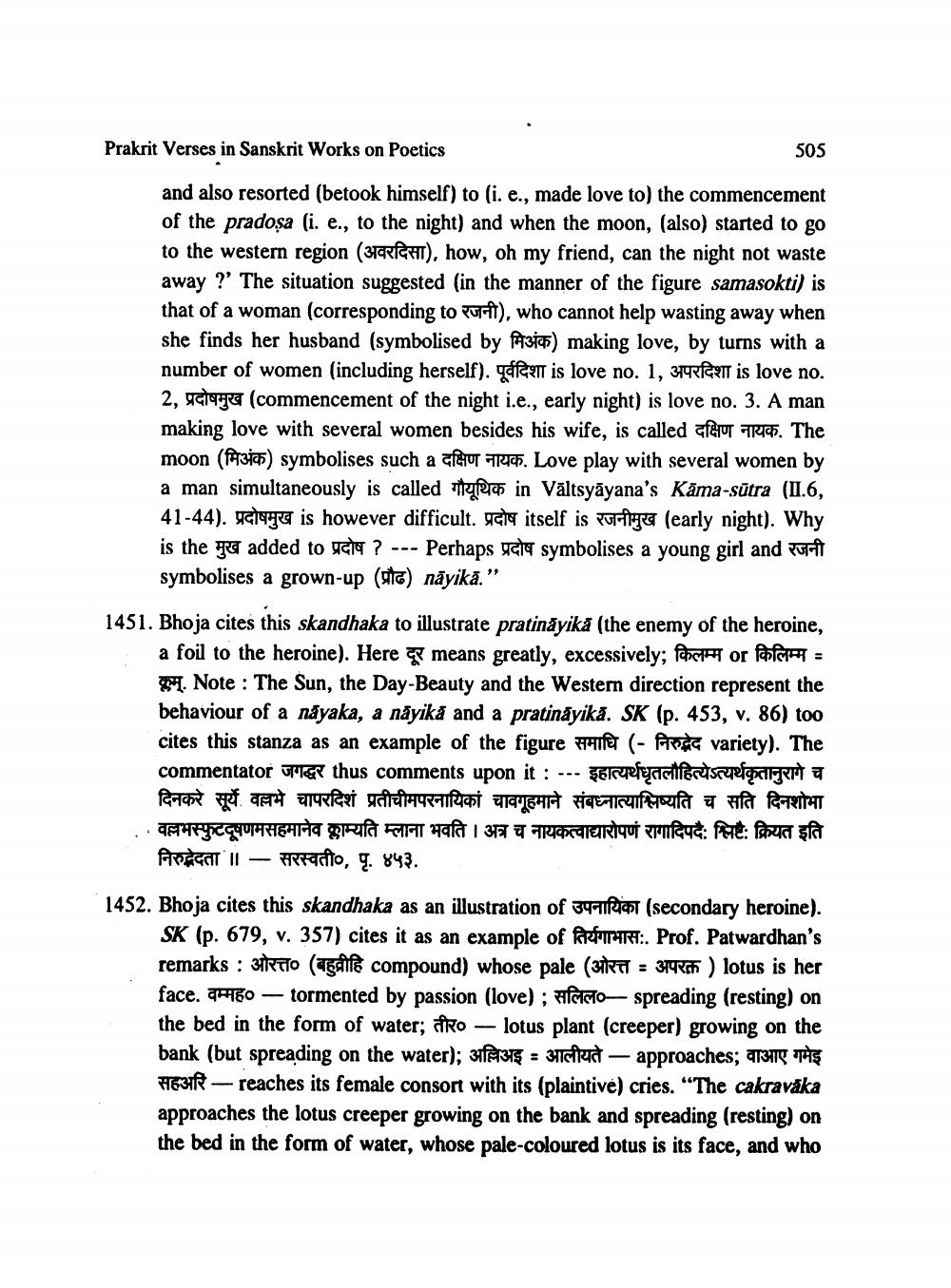________________
Prakrit Verses in Sanskrit Works on Poetics
505
and also resorted (betook himself) to (i. e., made love to) the commencement of the pradosa (i. e., to the night) and when the moon, (also) started to go to the western region (37aefecht), how, oh my friend, can the night not waste away ?' The situation suggested (in the manner of the figure samasokti) is that of a woman (corresponding to purit), who cannot help wasting away when she finds her husband (symbolised by PA310) making love, by turns with a number of women (including herself). est is love no. 1, 379fest is love no. 2, ustouga (commencement of the night i.e., early night) is love no. 3. A man making love with several women besides his wife, is called afert 7214. The moon (314) symbolises such a 10. Love play with several women by a man simultaneously is called my in Vāltsyāyana's Kāma-sūtra (II.6, 41-44). प्रदोषमुख is however difficult. प्रदोष itself is रजनीमुख (early night). Why is the मुख added to प्रदोष ? --- Perhaps प्रदोष symbolises a young girl and रजनी symbolises a grown-up (utc) nāyikā."
1451. Bhoja cites this skandhaka to illustrate pratināyika (the enemy of the heroine,
a foil to the heroine). Here a means greatly, excessively; Panthi or Pc = 41. Note: The Sun, the Day-Beauty and the Western direction represent the behaviour of a nayaka, a nåyika and a pratināyika. SK (p. 453, v. 86) too cites this stanza as an example of the figure समाधि (- निरुद्वेद variety). The commentator जगद्धर thus comments upon it : ... इहात्यर्थधृतलौहित्येऽत्यर्थकृतानुरागे च
दिनकरे सूर्ये वल्लभे चापरदिशं प्रतीचीमपरनायिकां चावगृहमाने संबध्नात्याश्लिष्यति च सति दिनशोभा . . वल्लभस्फुटदूषणमसहमानेव काम्यति म्लाना भवति । अत्र च नायकत्वाधारोपणं रागादिपदैः श्लिष्टैः क्रियत इति
ADECAT II — firarito, q. 843.
1452. Bhoja cites this skandhaka as an illustration of 34-149 (secondary heroine).
SK (p. 679, v. 357) cites it as an example of Ref :. Prof. Patwardhan's remarks : ओरत्त० (बहुव्रीहि compound) whose pale (ओरत्त - अपरक्त ) lotus is her face. CH60 - tormented by passion (love) ; Hatto spreading (resting) on the bed in the form of water; ARO – lotus plant (creeper) growing on the bank (but spreading on the water); अलिअइ = आलीयते-approaches; वाआए गमेइ 7631 — reaches its female consort with its (plaintive) cries. “The cakravaka approaches the lotus creeper growing on the bank and spreading (resting) on the bed in the form of water, whose pale-coloured lotus is its face, and who




